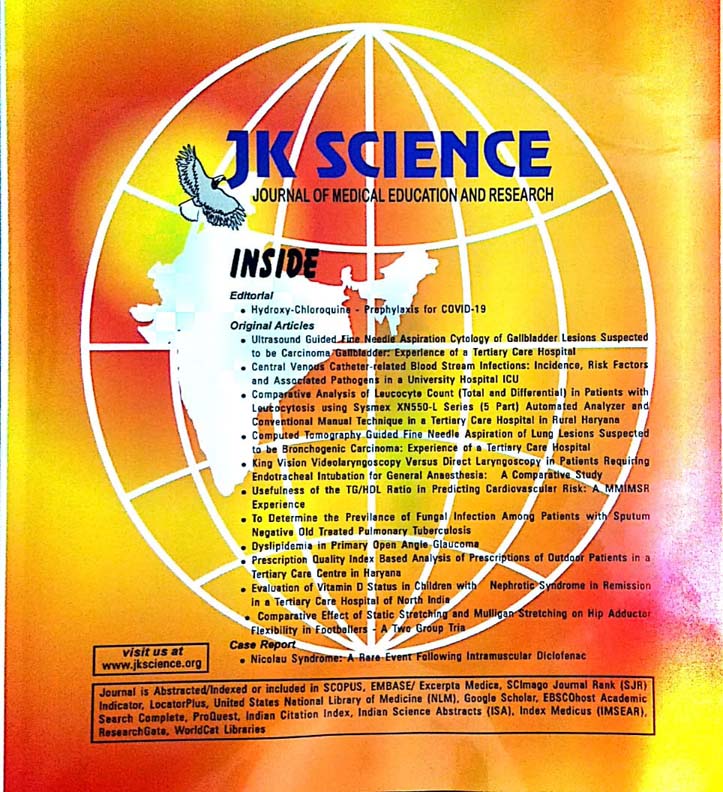Evaluation of Morphological Changes in Corneal Endothelial Cells and Central Corneal Thickness in Pseudoexfoliation Syndrome
Keywords:
Corneal endothelium, Central corneal thickness, Pseudoexfoliation syndrome, Specular microscopyAbstract
Background: Pseudoexfoliation causes characteristic corneal endothelial changes leading to corneal decompensation and loss of corneal transparency severely affecting vision.
Objectives: To evaluate morphological changes in corneal endothelial cells and central corneal thickness in pseudoexfoliation syndrome (PXS) and to compare it with age matched patients without pseudoexfoliation syndrome.
Material and Methods: A hospital based, cross sectional analytical study was conducted at Upgraded Department of Ophthalmology, Government Medical College/hospital, Jammu in which total of 46 patients planned for cataract surgery were included (23 patients with pseudoexfoliation syndrome and 23 patients without pseudoexfoliation syndrome). Corneal endothelial cell density (ECD), percentage of hexagonal cells, coefficient of variation (CV) in cell size, and central corneal thickness (CCT) were measured using specular microscopy.
Results: The mean ECD was 2325.1 ± 383.1 in the PXS group and 2763 ± 351.3 in the control group respectively, and ECD in the PXS group was significantly lower than in that in the control group (p=0.0002). The percentage of hexagonal cells was 48.3 ± 5.7 in PXS group and 51.5 ± 4.6 in the control group respectively, and percentage of hexagonal cells was significantly lower than that in the control group (p=0.04). The cell size coefficient of variation was 33.9 ± 2.6 in the PXS group and 33.0 ± 3.1 in the control group respectively, and patients with PXS had no statistically significant difference in cell size coefficient of variation compared to control group (p=0.29). The CCT was 509.0 ± 27.3 in the PXS group and 529.0 ± 23.6 in the control group respectively, and CCT in the PXS group was significantly lower than that in the control group (p=0.01).
Conclusion: In our study the ECD and CCT was significantly lower in patients with pseudoexfoliation syndrome regardless of the presence of pseudoexfoliative glaucoma.
Downloads
Downloads
Published
How to Cite
Issue
Section
License
Copyright (c) 2023 JK Science: Journal of Medical Education & Research

This work is licensed under a Creative Commons Attribution-NonCommercial-ShareAlike 4.0 International License.





